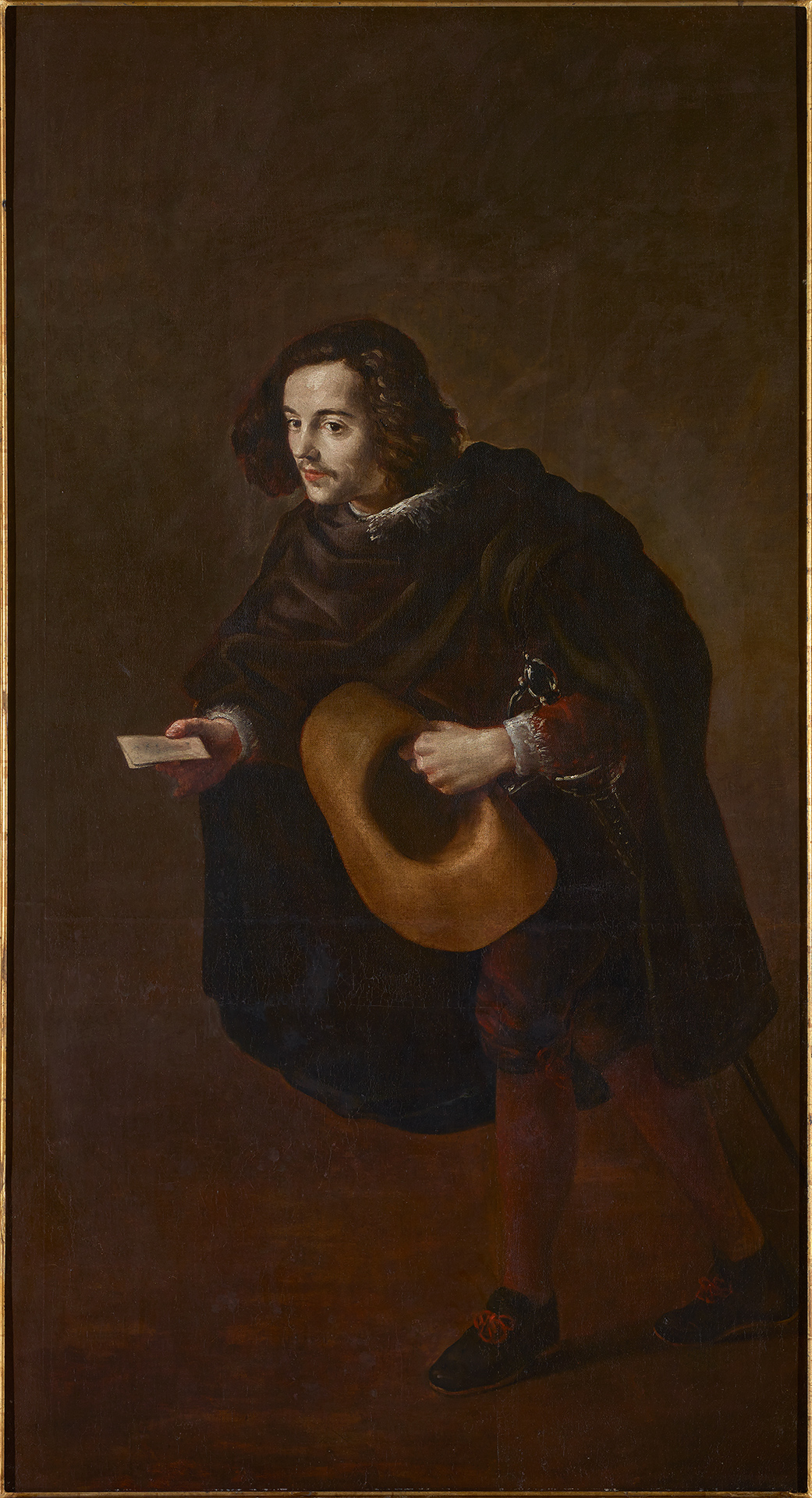
Fray Juan (Juan Andrés Ricci) Ricci (Madrid, 1600 – Montecassino, Italy, 1681)
The Messenger
Circa 1640
WORK INFORMATION
Oil on canvas, 176 x 97 cm
Son of the Italian painter Antonio Ricci of Ancona, who came to Spain with Federico Zuccaro, Juan Andrés Ricci or Rizi probably trained under his father. He has been called the "Zurbarán of Castile" for the gravity and serenity that permeates his work and the silence and naturalism of his painting. Rizi became a Benedictine monk in 1628 and was commissioned to paint important series for the monasteries of Silos, San Juan (Burgos), San Pedro de Cardeña, Medina del Campo and San Millán de la Cogolla. He moved to Italy in 1662 and died there at an advanced age in 1681.
Rizi's works are monumental compositions in which the use of directed light and short, rather light brushstrokes set him apart from other painters of his day. Since Antonio Ponz, there has been much speculation about the technique used in his paintings, which he often left unfinished, with a very thin coat of paint that has significantly affected their conservation. This is precisely the case of The Messenger, which X-ray analysis has shown was actually part of a larger work.
When Matías Díaz Padrón studied the piece and published it as part of the artist's oeuvre, he noticed the grafts, cuts and inpainting on the canvas, which led him to believe that a fragment containing a table or sideboard and a second figure was missing. However, X-rays revealed the figures of four horses seen from behind with a man in a chariot that may represent the triumph of Hercules, or might suggest that this canvas was reused for another composition, a common practice among painters at the time. Evidence of reuse is provided by stitches on the pictorial surface, visible when lit from the side, which tell us that the artist had to graft several pieces of canvas, confirming that what we see today is really just a fragment of a more ambitious composition.
In any event, the character is clearly related to types that appear in other works by Rizi, especially Saint Benedict Blessing the Bread (ca. 1655) at the Museo del Prado, from the series he painted for the Monastery of San Juan in Burgos. Nor can we overlook the influence of this composition on other painters in Madrid, as illustrated by the similar posture and angle of the character in Juan Carreño de Miranda's The Buffoon Francisco de Bazán (ca. 1680, Museo del Prado). However, we do not know if Carreño de Miranda really based his work on Rizi's figure, if the two artists had a common source, or if it was merely a conventional feature used by these painters. The truth is that the gesture and stance of the bowed figure holding a letter in one hand and his hat in the other, doffed as a sign of respect, can be linked to that of General Spinola in Velázquez's Surrender of Breda (1634–1635, Museo del Prado) and, as Matías Díaz Padrón pointed out, is also frequent in other encounters, such as the meeting between Cardinal-Infante Ferdinand of Austria and the emperor after the Battle of Nördlingen in a painting by Rubens (1634–1635, Museo del Prado).
Unfortunately, the mutilation of the work, the inpaints and the aforementioned conservation difficulties make it very hard to decipher the complex meaning this painting must have had when the artist made it, and we are forced to make do with this fragment. [Benito Navarrete]

